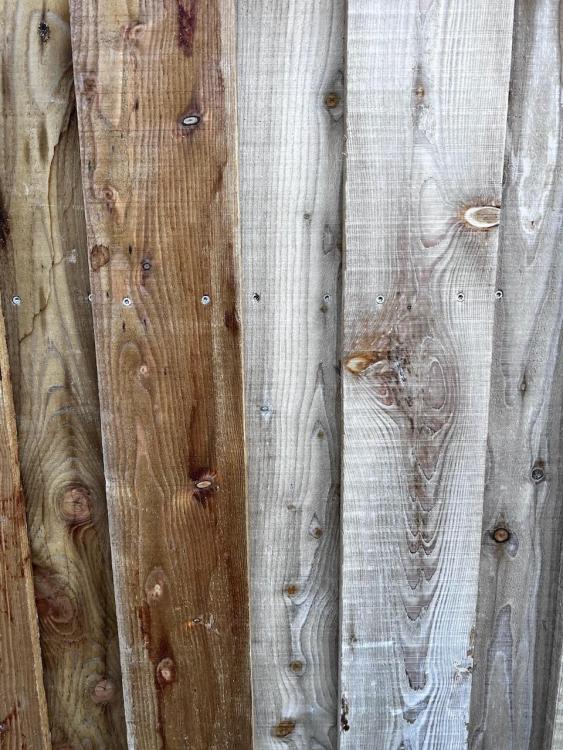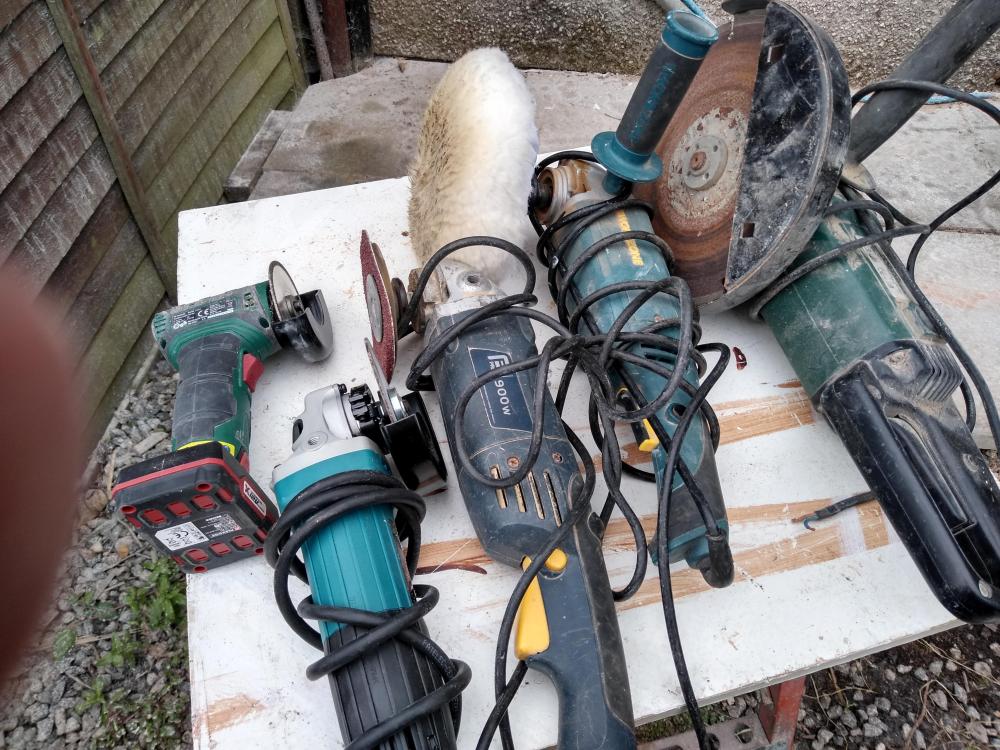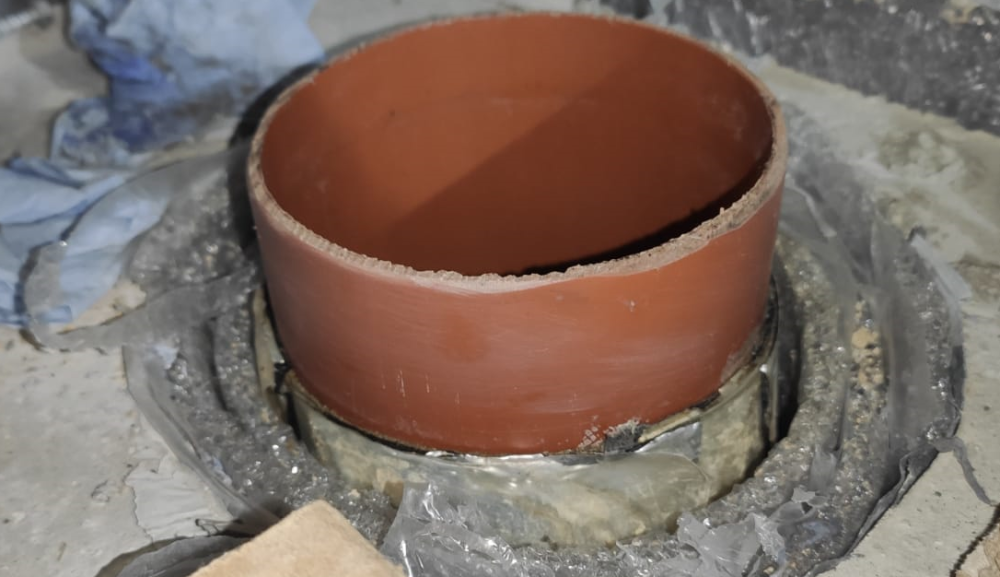Leaderboard
Popular Content
Showing content with the highest reputation on 08/30/23 in all areas
-
You don’t give them heat loss calculations, THEY give it to you as part of the design for the install……. every house is suitable for a heat pump, it just needs designed correctly, appropriate electrical tariffs selected etc etc3 points
-
I agree with @Russell griffiths. I think there is another roof coming off that. You are quite a distance from the central wall. I doubt it could be jacked right back to where it should be, but you could possibly get it close. A photo from the outside would be good. I doubt those little additional struts are doing much, except trying to push the ceiling down in whatever room is below it. Wouldn't make me walk away, but i would want a chunk of change off the asking price. While you are sorting it, stick a load more fluffy stuff up there. It looks very minimal at the moment. Dont block the eaves ventilation though. That underfelt looks like the old type, so if you are short of pennies make sure somebody has a good look at the tiles on the roof. If the property is 1930's the old tiles may still be doing the job, but will be near the end of life. If you have to do anything on the roof, most of them will break when you start messing with them.3 points
-
I know nothing about treatment plants, or cesspits. Who pays to have all the solids sucked out now ? It could be fine for another 100 years, by which time we will all be dead. If you are smitten find a way to make the situation work for you. Pop in and see the neighbour. Explain that you are a townie, and don't have a clue about how the cess-pit works, who pays for it etc. Nice way to meet your potential new nextdoories.2 points
-
External copper pipe diameter. Plastic pipe has a smaller bore and more pressure drop for fittings. I think you nearly halve the capacity for plastic pipes.2 points
-
To help any others reading his table above … "Here you have the external pipe diameter on the left, and how many kW/s of power the pipe can carry in the centre" … from the Heat Geek website.2 points
-
I thought it was compulsory to have at least one central thermostat control alongside TRVs under building control regs?2 points
-
My understanding is that when all TRV are shut I believe the increase in pressure causes a bypass to open. This routes hot flow back to the boiler return. The flow temperature rises until the flow stat in the boiler shuts off. The boiler will eventually cool and light up again.2 points
-
I could be completely wrong ( but unlikely 🤣🤣) if you look in the pic there are flat boards on top of those rafters, these look like valley boards, there is also a timber directly above the split, this looks like a ridge board. I think there is another roof situated resting directly on that purlin. Either it is a little gable type roof sitting on top badly designed, or an additional roof has been added like a small extension. Either way the purlin has been overloaded i think this could be jacked back up, from the opposite purlin or a wall below, then the original purlin could be sandwiched with a couple of steel plates and plenty of bolts, with a couple of better struts going down onto an internal wall. Either get them to fix it or go in £10,000 under on an offer.2 points
-
2 points
-
For the last 18 years, since I retired, I have been living in a pretty bit of rural France, the southern end of the Massif Central. I have done a fair bit of building work myself on our home here, and also on my daughter's house. After she saw how nice it was, she and her family moved to the next village where they bought an exceptionally dilapidated wreck of an old building, which she, her husband, and I, managed to turn into quite a nice house. All of this was a matter of learning how by doing it: my pre-retirement work all involved sitting at a desk in London. But I joined this forum specifically because I thought that other members might be interested in an opportunity. My next-door neighbour (and friend) died very unexpectedly a couple of months ago, and he had been engaged for the last six years on an ambitious self-build project of an unusual type. His widow isn't a position to continue, and in a while she will almost certainly be looking to sell the land and what there is of the project building. It's a very attractive location - very quiet, with excellent unspoilt rural views across the valley - and if it had been for sale 18 years ago when we moved here I know I would have bought it like a shot. I have no financial interest in this at all, except that I would like to see the owner treated fairly in what has been for her a very difficult situation. If the moderators here don't approve, obviously I'll not continue to post. If this is OK, I'll put up a separate post with more information.1 point
-
No, all marks are rubbed off, not an expensive one, medium price diamond blade.1 point
-
Do a search on here as this has been discussed before. The general consensus seems to be it’s fine as it’s not a huge amount of brine. I’m fitting one to mine.1 point
-
Good question. Hard water often occurs when the water that comes in from the mains supply is extracted from a chalk aquifer or run off from chalk bearing soils. The South Downs are a good example of this. This makes the water that comes into your house a little alkaline and it has a lot of mineral salts in it too. In parts of Scotland the water is off peat soils which makes it a little acidic. What folk do is to have water "filters" that compensate for the alkaline water and capture the mineral salts.. so your kettle and hot water system don't get firred up. In Scotland in peaty areas the water can be a bit brown when it comes out the tap so the filters clean that up a bit. But in both cases the PH value is close enough to 7.0 so as not to impact on the bacteria in a septic tank. However.. if you are talking about the things you hang on the side of the toilet then they are toxic to the bateria in the septic tank, just like toilet bleach.1 point
-
All fair points, especially splicing in an inline mechanical meter then shitting various rads. My musing was more a simple first take device. Before any major work is done, to aid with the quote process. If the pipe work needs lots of upgrades it will.add to cost and upheaval and might male the job less attractive. Better to find out before install starts!1 point
-
A few random thoughts from me. If you are upgrading to a heat pump than that it some serious expenditure. I would want to make sure that my existing pipes supplying the rads are clean as I can get them so that means a good flushing... which is kind of what you are thinking about.. making sure the pipework is able to support the heat pump system. What if you start by flushing your existing system and where the flush water comes out attaching a filter ( magnetic) so you can see how much crap is in the system. You can use the mag filter later on anyway. This is good for the sole not least. Next if you get a hose pipe and run that off the mains water supply to where the outlet of the pump is going to be then you can measure the flow rate that comes out the hose with a bucket. You could do this with three rates of flows out the hose. Call this the inlet hose... the idea is you calibrate the flow rate out of the hose. You could just use a gate valve and say.. one turn open gives me x litres per sec.. two turns y flow rate. Just check what pressure variation the waterboard supply at.. could be pretty constant if you do it the same time each day. Next isolate all the rads (which you are going to change anyway?) apart from one. Put a pressure gauge on the flow just after the existing pump (flow side) so you know the pressure just after the water from the hose enters the system. Buy gauges that you are going to use later. Attach another hose to the return side close to say where the return for the boiler is and run that into another bucket outside. Attach a pressure gauge here to just where the water comes out the return side so you don't capture the losses in the exit hose. Now turn on the hose and measure the flow rate and pressure on exit. I have to go back to my Hydraulics for the equations but if you know the inlet pressure and the exit and flow pressure you can calculate the losses in the loop you are examining. Do this for the three different inlet hose flow rates you have calibrated the hose for. In terms of flow what goes in has to come out the other end so I think from memory you have three variables and from that you can calculate the losses in the loop you are looking at..the losses gives you the head loss in the loop which you need to size the pumps etc. If you do this with the three different flow rates from the inlet hose it lets you then see how the different inlet pressure = pump head which impacts on the performance of the loop. Now you know about your existing system with the rads you have. If you swap out all the rads then the short bit between the rad inlet and outlet should not make much difference.. its the pipes that you need to know about and if you change the type of TRVs at the rads. But if you swap all the TRVs for the same type it just shifts all the loop resistances by the same amount.. which you can adjust when you put in your the Heat pump system. The next bit is the hard bit maths wise. You now know the loop resistance of each loop when all the other rads are turned off. Go back and turn them all on and repeat the above but with all the rads open. This will give you the head loss for the whole heating system. If you then compare the losses for each loop (with all the other rads off) then you should be able to see if you have problem loops. Then you can work out what to do about that. But you also now know what the head losses are when all the rads are open.. so now you can start to design your heat pump system based on this is the worst it is going to be. You are going for larger rads and so on. The upside! 1/ You'll need or need to learn some basic plumbing skills. But if you do this then you will be well set when you come to look at the plumbers work, have a sensible discussion and keep costs down. 2/ You will get a huge amount of enjoyment playing about with it, even if it's just a case of cleaning crap out the existing system.. you'll save some money for good use later and learn enough so the plumber does not take the mickey out of you. 3/ You may find that you don't need a HP at all and can splash out on other things..1 point
-
In my last house i had 4 internal vertical soil pipes. I was being posh, and didn't want them outside spoiling the look of my stunning render. On the new house i will probably have 4, but this time outside, although to the sides of the house. I wouldn't want One on the front elevation.1 point
-
Flushing pipe is easy. You'll f**k the heat exchanger in the heat pump long before you have to worry about muck settling in the pipe.1 point
-
Metering is my day job. Clamp on meters are naff and fairly spendy. Micronics U1000 is the benchmark. Retail £1000 apiece. Inline meters in small sizes are cheap as chips and easy enough to cut into an existing system if you're serious. Consider it part of the survey. Replace with a spool piece (spacer) if you decide not to go ahead with a heat pump install. A DN20 meter (130 mm x G1" body) is £130. A DN25 meter (260 mm x G 1 1/4" body is £175. Meter unions go from 1" flat face couplings to a 3/4" male thread. (pair with 3/4" female to 22 mm compressions) Or from 1 1/4" to 1" male thread. (pair with 1" female to 22 mm or 28 mm compressions) Use selective isolation to work out what the flowrates in branches are. Start with everything on. (so that pipes are showing full pressure drop) Then isolate one radiator. The difference in flow is what that radiator was flowing. Then turn it on again and isolate something else etc. I wouldn't bother personally. Guestimate based on what you know about what you have. If the primaries are short you'll be ok. Piping a 6 kW (old school fixed speed ground source) heat pump into 22 mm copper then a 200 litre volumiser (tank in series) then 1" manifolds to 16 mm MLCP to some rads is a job for me for the next couple of weeks. 🙂1 point
-
Watch out for old blades they have a use by date on the blade😁1 point
-
"Because unless the element surface temperature is higher than the water temp, there is no heat transfer." Yes, i gree with that, but surely unless the temperatures are for some reason changing rapidly in the cylinder then the element will have stabilised to the same temp as the water. So any temp increase inside the element will result in the element surface temperature increasing and thus transfer to the water. The energy has to go somewhere.1 point
-
Your ok with 15mm in a lot of cases, I have a 2 port UFH manifold fed from the main header in 15mm Hep2O, approximately 6m each way. Zero issues with flow rate.1 point
-
Yes that's exactly what I'm talking about. You could use the table but that only gives you a rough estimate. You might have 28mm pipes heading out of the boiler, but they drop down to 15mm in some boxing before meandering about all over the place. Or, as has happened to me on a boiler system, you think the issue is the pipes are 15mm but it turns out it's actaukky 22 all the way to just before it pops up above the floor and you're fine. Measuring the actual flow has to be the gold standard.1 point
-
Not quite an integrated heat meter but a useful intro here. I used to work for the firm that developed the first u/s gas meters. You have to make assumptions about the flow profile across the pipe, I don't exactly know how they do it.1 point
-
A lot of good points and observations made here. Yes agree with all it does look like there is another roof framing in which will add a bit of a point load to the purlin. Also as others have noted there is a knot, shake in the timber right at the point of maximum bending stress. The purlin is something that can often be fixed. But you can see the roof must have dropped.. so that suggests that the roof may have spread, including the bit of roof coming off the purlin. I would want to understand if the roof has spread and if so what damage if any has been caused. Some roofs spread and don't impact on the rest of the structure too much.. at times spread can cause havoc = money. Often with something like this you just aim to stop further movement rather than trying to jack things back into position as jacking can often cause even more damage. Sometimes we want to add a bit of prestress to a remedial member. For example if you bolted a new bit of timber to that purlin before the new bit of timber starts to work it needs to carry load thus for load transfer to occur you need more movement... which you are trying to avoid. What you might do here is see if you can get a good length of new timber into the attic that spans nearly wall to wall. Bolt it in the middle where the existing purlin has split then jack the free ends of the new timber.. you pre stress it. Then finish the bolting and use some brackets or equivalent (there are some clever ways of doing this that don't require brackets per say, these work like gallow brackets but much more refined and made out of timber) to fix the ends of the new timber to the masonry.. to take some of the load and help to stop things from twisting. This is a bit of a simplification but hope I have conveyed the principle of my thinking. The main thing is to really examine the rest of the house for damage caused by possible roof movement, if none then it's down to just fixing the roof in a practical and as simple a way as you can find using off the shelf materials.1 point
-
NO, I have the same diamond blade I have been using for years (not full time) cutting stone, concrete and even steel!!!1 point
-
1 point
-
you could always approach the farmer, ask if you can site the septic tank on his land as well, then simply allow the other neighbours to route through your land on a sealed pipe. If you can negotiate £10k off the asking price, 5k, for the farmer and 5 for the tank works, you may have a quick solution.1 point
-
The only way to find out is to get multiple quotes yourself in your area and that will give an idea of what you're expecting to pay. On this site there is a lot of reigonal variance and people with varying levels of skills and connections in the construction industry. For example @nod being in the trade is likely to bring in a project significantly cheaper than the average joe, I also beleive he is in a different part of the country, I doubt he would bring in for that price in the SE where even materials are more expensive. Why not post up your plans and structural drawings for us to have a look?1 point
-
The whatever reason is likely to be because their sewerage system is now theirs and theirs alone so any problems is on them without relying on other people. They’ve also removed/reduced one considerable difficulty come sale time. Make sure you ask them where they discharge the water from the treatment plant to.1 point
-
1 point
-
@joe90 If it's only 500mm how about doing it in concrete. You could embed shingle in it when wet, if you wanted it to look decent ?1 point
-
1 point
-
French doors are a bit more likely to be used than hauling open the bi-folds. We swapped a large impractical balcony door for French doors and glad we did1 point
-
They obviously do a decent job near @ProDave Won't last a week down south. Total waste of time and money.1 point
-
The cold lay stuff has very small stones, and the bitumen has a high solvent content which evaporates to let it harden. It is not very strong, especially against scrubbing or spinning wheels. The hot stuff has graded stone, like type 1, and is inherently stronger. The bitumen binder hardens in cooling, and glues the stones together. Cold lay for amateur (and council sometimes) patching of small areas. Hot for proper job.1 point
-
Without a thermostat anywhere what can happen is all the TRV's shut down, and the boiler and pump keep running to circulate hot water around completely pointlessly, and waste a small amount of gas firing up occasionally to keep that water hot. The traditional way was one room did not have TRV's instead that room had a room thermostat. That needs to be the room that takes longest to heat up, so you can be sure the other rooms are warm before that turns off.1 point
-
Whilst on this subject, I am installing electric gates on a concrete plinth but have about 500mm to the edge of the tarmac road (very bad condition) and due to undulations think tarmac would be best but can’t find someone to do such a small job (fir a reasonable price). So what do people think of cold lay tarmac (DIY) ?1 point
-
Kinda, I used the configurator that was available at the time then I bought mine from Plugin Solar. We had a scheme in mind, but when setting the trays out on the actual roof it became apparent that they were too tight to the valleys to flash and mount correctly and so we re-jigged to put two panels on a different face which then required purchasing a couple more bits of flashing. But the move actually suits us better in honesty as we retain production later into the evening now (but at the expense of peak output).1 point
-
Boiler doesn't know or need to know what occurs downstream, all it manages is temperature and delta T. So the basis of operation is. There is a target max temperature and a corresponding dT. The boiler will in a controlled manner increase flow temp in response to a change in dT. The dT being the difference in flow and return temp. The flow temp will increase to the max it is programmed to do. It then stops. Once the return temp has dropped the process starts again. Now a couple of questions for you. 1. You have an outside sensor, is your boiler set up to run weather compensation? 2. Combi or system boiler?1 point
-
i think double doors into main rooms - lounge, diner, master bed etc where the size allows looks great, pretty much all the £££££ houses have them! Not a hugely expensive upgrade either.1 point
-
cool, if you were using brick many of the windows didnt work brick so could be tweaked now to avoid cuts and ££.1 point
-
1 point
-
I don't know the model of boiler you have but suspect that it senses both the flow and return temperatures, if there is not much difference, then it shuts down. It may also do this on flow pressure, which probably increases. Is your boiler actually giving you problems?1 point
-
+1, or the purlin had a weakness in it to start with and age has found it’s weakness, either way as Russ says above, jack it up and strengthen the area (and negotiate the price), it would not put me off buying it.1 point
-
Debbie's idea. ,🥴 she's always correct, right, perfect, spot on . Jaffa cakes all round @Pocster1 point
-
Get a new build SAP assessor on board asap. A sap calculation should be done at the design stage to show the proposed dwelling complies with the regs. This is updated on completion to reflect the ‘as built’ house and to generate an EPC that is required as part of BC sign off. The Regs now also require a lot of photo evidence of the insulation and its installation. Your sap assessor will advise further. Without this evidence the assessor will use default values with the risk the completed house fails the Regs.1 point
-
We have started fitting our external wall insulation and render. Whoever invented sponge floats need a knighthood. That’s all.1 point
-
Units with R290 refrigerant have restrictions because it's heavier than air and flammable. They will be detailed in the instructions, suggest you check them.1 point
-
Progress!! I have a dehumidifier, had some damp in the previous house, this helped solve the problem, I use it now to dry the washing in the spare room , so the dehumidifier could come in handy!!1 point











